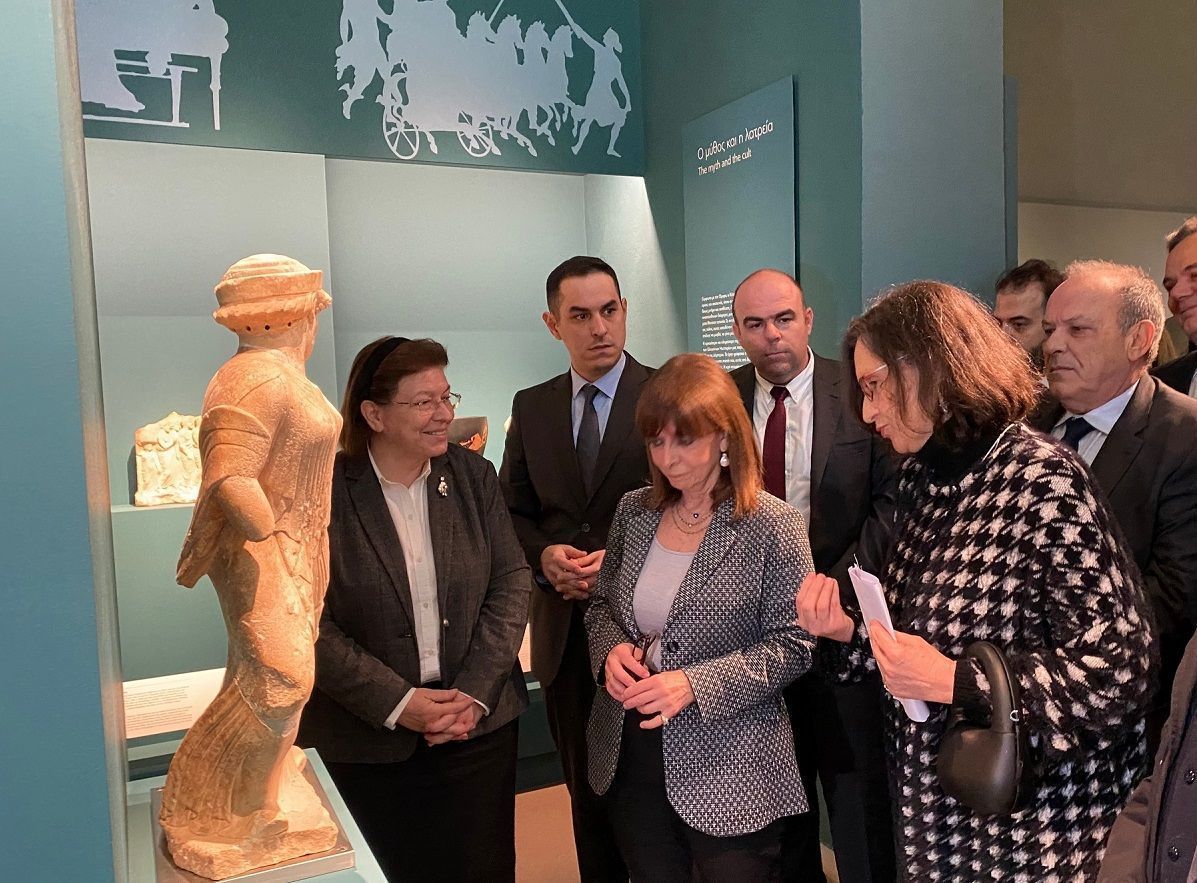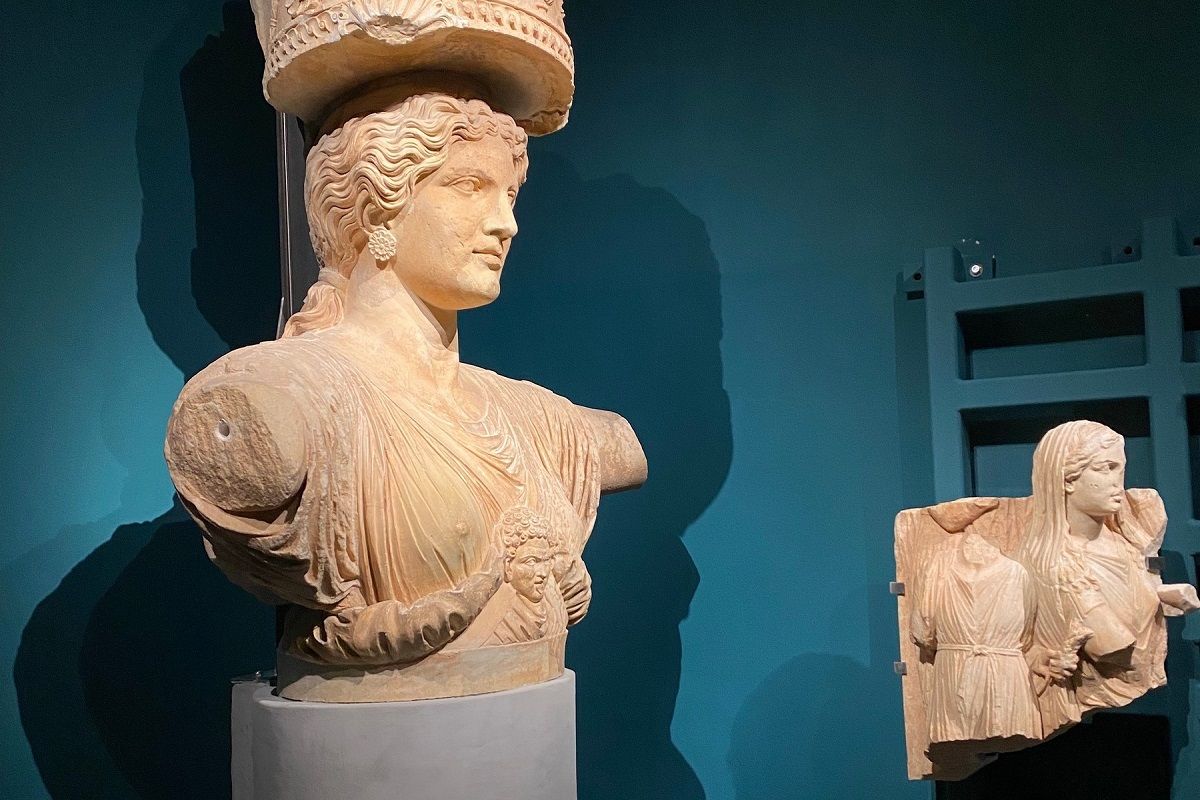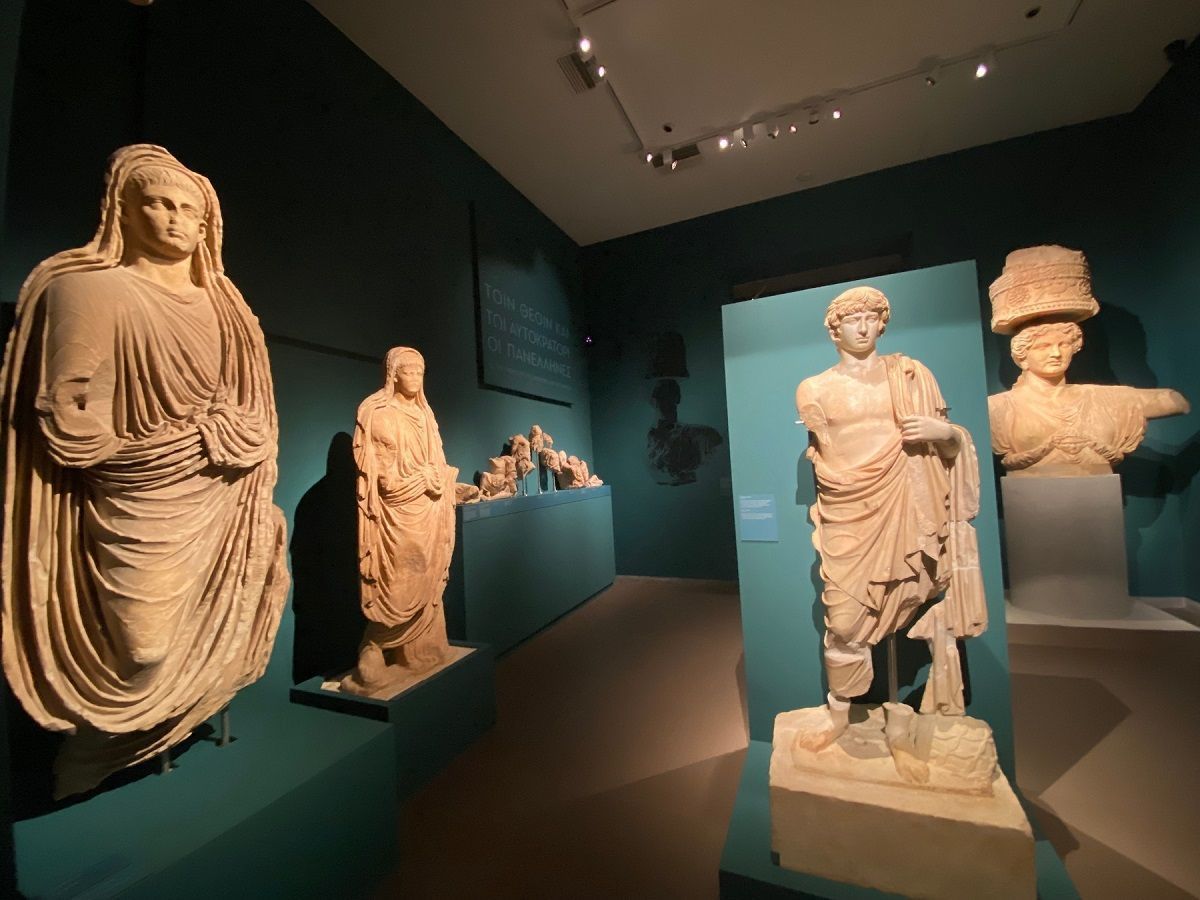Elefsina’s Archaeological Museum Reopens After Refurbishment
The Archaeological Museum of Elefsina, one of the first archaeological museums in Greece, has reopened its doors to the public after completing maintenance and improvement works.
The upgrade focused on modernizing the museological approach and presentation of exhibits by using audio-visual media to improve the experience of the museum’s visitors.
During its launch event in late February, Culture Minister Lina Mendoni noted that the museum’s new face confirms the government’s commitment to preserve and promote Greece’s rich cultural heritage.

Culture Minister Lina Mendoni and President of the Greek Republic Katerina Sakellaropoulou at the Elefsina archaeological museum. Photo source: Ministry of Culture.
“This upgrade is just the first step of a larger project: To create a new archaeological museum of Elefsina in the recently acquired Old Olive Mill building complex,” the minister said.
According to Mendoni, the new museum will cover an area of approximately 4,500 square meters with a competition of the necessary related studies expected to launch during the forthcoming summer period.
The archaeological museum of Elefsina
Built in 1889, in order to house findings from the excavations of the adjacent archaeological site, the museum in Elefsina boasts masterpieces that date from Prehistoric to late Roman times, including architectural sculptures and reliefs.
Among the sculptures, the large statues of goddess Demeter and Asclepios stand out.
The museum’s exhibition today is organized in two thematic categories: “Elefsina: the city around the Sanctuary” and “The Great Mysteries“.
The first part offers a brief introduction to the city of Eleusis, while the second part narrates the founding myth of the famous ancient sacramental cult and the formality of initiation.
According to the culture ministry, the reopening of the museum is part of a complex project that includes the remodeling of the archaeological site entrance; a path connecting the site to Elefsina’s Heroes’ Square; the creation of a new on-site route that will offer access to people with disabilities; and an overall improvement of infrastructure and services to visitors.






